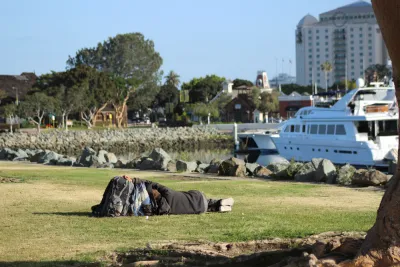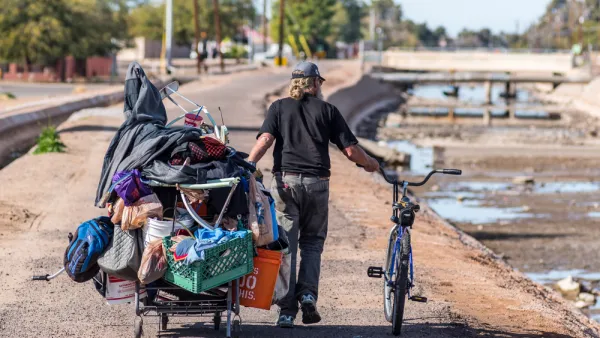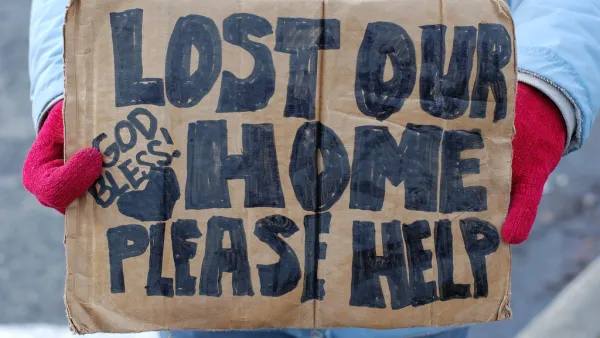San Diego has the fewest number of beds for homeless per capita in the nation and must directly intervene to increase the stock of both temporary and permanent beds, according to planning activist Murtaza Baxamusa.

San Diego is known for its beaches, sunshine, and zoo. However, tourists are often shocked by the number of homeless sleeping on its downtown streets. The city has been known to 'sweep its homeless under the rug' for major events. For example, just before the 2016 Major League Baseball All-Star Game, the city "posted signs instructing hundreds of homeless people living on the streets near Petco Park that they had just 72 hours to vacate the area," as well as other measures.
San Diego has the lowest number of “housing beds for the homeless in San Diego relative to the population size of the region,” writes planning activist Murtaza Baxamusa. Homelessness is a pervasive problem, he continues:
Schools are broadly impacted by homelessness too. Last year, 23,800 students in San Diego’s schools were either unsheltered, or were in unstable living arrangements, such as shelters, couch surfing, or doubled up with another family.
Baxamusa goes on to explore some of the more successful programs around the world, including:
- Baltimore, San Francisco and Portland have considerably increased their proportional stock of Permanent Supportive Housing.
- [A]dopt a “Right to Shelter” law which guarantees shelter with varying degrees of regulations similar to those in the state of Massachusetts, Washington, D.C., and New York City, and has resulted in a considerable stock of temporary accommodations.
- The People’s Policy Project suggests constructing a large number of government-owned municipal housing developments. Unlike traditional American public housing, all city residents will be eligible to live there. (This strategy has been a mainstay in several European countries.)
Baxamusa concludes:
[W]e must explore public options to provide affordable homes for all. We cannot wait for the private sector lured by government subsidies to solve this problem alone.
For more information, please read the source article.
FULL STORY: ‘America’s Finest City’ is Worst in Nation in Housing the Homeless

National Parks Layoffs Will Cause Communities to Lose Billions
Thousands of essential park workers were laid off this week, just before the busy spring break season.

Retro-silient?: America’s First “Eco-burb,” The Woodlands Turns 50
A master-planned community north of Houston offers lessons on green infrastructure and resilient design, but falls short of its founder’s lofty affordability and walkability goals.

Delivering for America Plan Will Downgrade Mail Service in at Least 49.5 Percent of Zip Codes
Republican and Democrat lawmakers criticize the plan for its disproportionate negative impact on rural communities.

Test News Post 1
This is a summary

Test News Headline 46
Test for the image on the front page.

Balancing Bombs and Butterflies: How the National Guard Protects a Rare Species
The National Guard at Fort Indiantown Gap uses GIS technology and land management strategies to balance military training with conservation efforts, ensuring the survival of the rare eastern regal fritillary butterfly.
Urban Design for Planners 1: Software Tools
This six-course series explores essential urban design concepts using open source software and equips planners with the tools they need to participate fully in the urban design process.
Planning for Universal Design
Learn the tools for implementing Universal Design in planning regulations.
EMC Planning Group, Inc.
Planetizen
Planetizen
Mpact (formerly Rail~Volution)
Great Falls Development Authority, Inc.
HUDs Office of Policy Development and Research
NYU Wagner Graduate School of Public Service




























